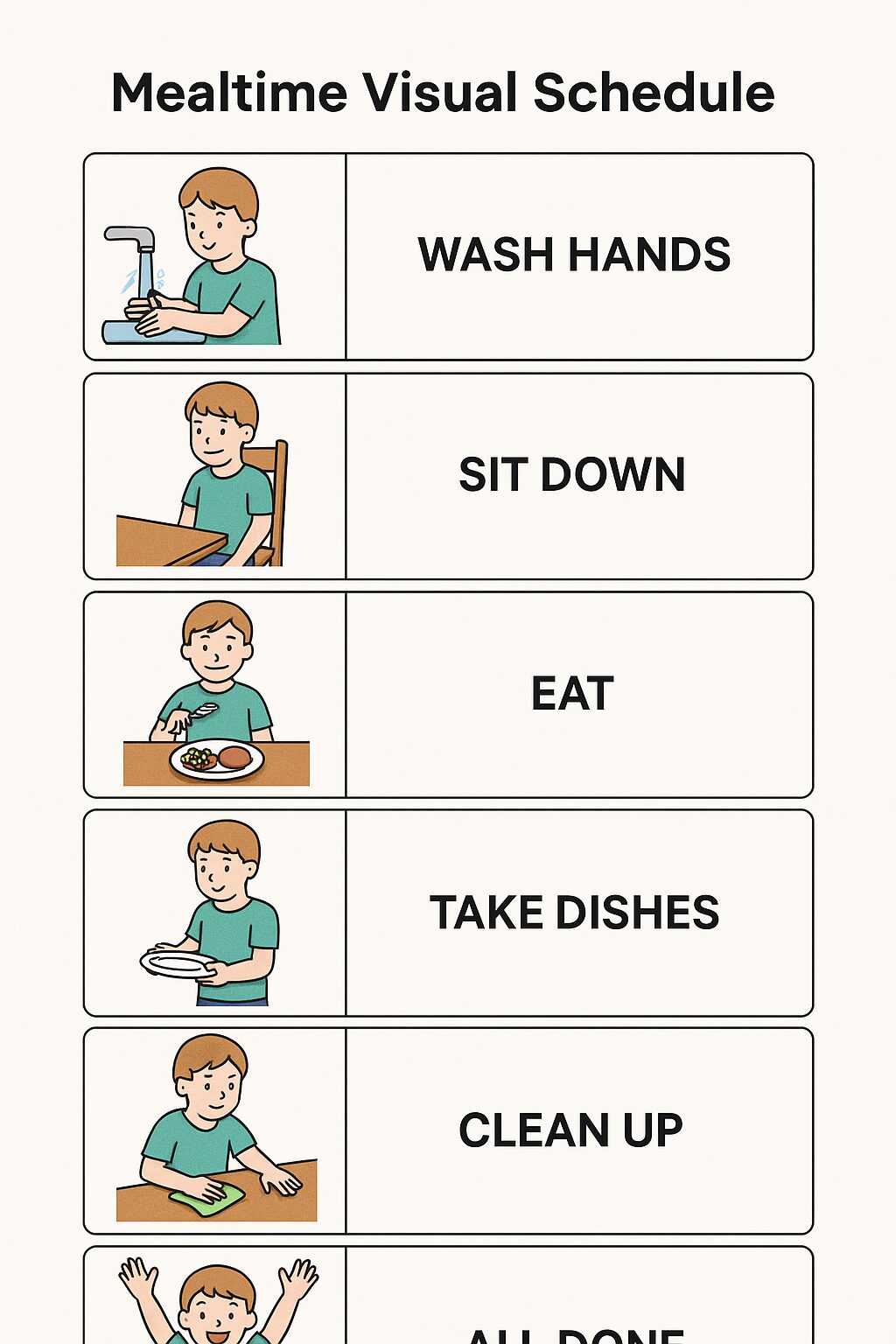Picky eating is common in autism, but it’s not just “being fussy.” Sensory sensitivities, anxiety, and routine preferences can all play a role. This guide blends parent-tested ideas and therapist-backed strategies to help your child expand their diet without stress or battles.
Picky Eating
Feeding Therapy
Sensory-Friendly
Why picky eating happens in autism
- Sensory sensitivities to textures, flavors, smells, and temperatures.
- Strong preference for familiar foods and predictable routines.
- Visual presentation of food can affect acceptance.
- Motor planning or oral-motor challenges with chewing and swallowing.
- Negative past experiences (e.g., gagging, choking).
- Co-occurring GI issues or allergies making certain foods uncomfortable.
Build a plan for success
1) Food chaining
Introduce new foods that are very similar to your child’s safe foods. Example: if they like plain crackers, try crackers of a different brand, then move to lightly flavored ones.
2) Gradual exposure
- Step 1: Have the new food on the table.
- Step 2: Encourage touching or smelling it.
- Step 3: Lick or take a tiny bite.
- Step 4: Increase the bite size gradually.
3) Safe foods at every meal
Always include at least one preferred food so your child feels secure at the table.
4) Visual supports
Use picture menus or a visual schedule for mealtime to show what’s being served.
Printable Visual Mealtime Schedule
Use this one-page illustrated schedule to make mealtime predictable. Print, laminate, and check off each step together.

Sensory tools that help with mealtime
- Chewable necklaces to regulate oral sensory input before meals.
- Weighted lap pads or blankets for calming during meals.
- Fidget tools to reduce anxiety while waiting for food.
- Calming activity (like light-up toys) before sitting down to eat.
Mealtime strategies
- Keep a consistent schedule for meals and snacks.
- Limit grazing between meals to build appetite.
- Avoid pressuring or bribing—focus on exposure, not volume eaten.
- Model eating new foods yourself without making it a demand.
- Celebrate small steps toward trying new foods.
Frequently Asked Questions
Why is picky eating more intense in autistic children?
Because sensory sensitivities, anxiety, and a strong need for routine all combine to make food acceptance harder.
What is the difference between picky eating and ARFID?
ARFID (Avoidant/Restrictive Food Intake Disorder) is more severe and may require specialized feeding therapy. Always consult a professional if weight, growth, or nutrition are concerns.
Do sensory tools actually help with eating?
Yes—many children eat better when sensory overload is reduced through calming tools and predictable routines.


